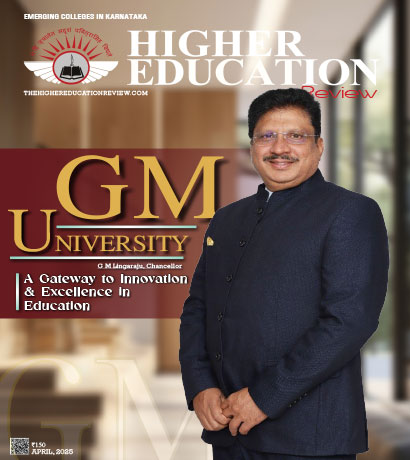Privatization of Education Sector: The Pros And Cons

Hersh Shah, Founder, ITI EdVest
Q. What is your view on the contribution of private players to the Education sector?
Contribution to the private education sector is majorly in the form of colleges, universities, coaching classes and K-12 schools. The exceptional growth in these segments is attributable to the active participation of the private sector. An additional capacity of about 25 million seats needs to be created if India is to meet its GER target for Higher Education. However, a breakup of the government spends shows that less than 1 percent of the budget allocated for education goes towards capital expenditure. This widening of the demand-supply gap will cause an infrastructure and investment deficit, creating growth opportunities for the private sector. Further, the ability to innovate and provide experiential learning through industry partnerships and research-based pedagogy is drawing the demand towards private institutions. I believe there is tremendous scope for the private sector to contribute meaningfully to Indian education. The major drivers include increasing awareness for quality education, higher competition for professional courses and increasing demand for skilled labor.
"The main challenges faced by educational institutes in India are inadequate infrastructure, unavailability of quality teachers at the proposed salaries and inability to invest in technology & research"
Q. Are you seeing any new trends in this sector?
I am seeing development mainly in 3 areas coaching industry, online education and vocational training. The Coaching Industry will continue to remain an attractive spot for private players given the nature of the business deregulated, asset-light models and good margins. The traction in the online education space has also been phenomenal with the industry expected to touch $2bn by 2021. Some of the institutions which were traditionally run as brick and mortar coaching classes have now adopted a hybrid model and some of them are completely new players focusing on e-learning to penetrate faster and also leverage their technology to collaborate with international institutions. Re-skilling and online certification is currently the largest segment of online education. Another important segment which has been attracting private investments is the skilling industry majorly regulated by the National Skill Development Corporation, focused on up-skilling of the youth in various disciplines. We are also seeing a great willingness on the part of the Government to provide autonomy to various colleges and institutes.
Q. What do you see as the major challenges faced by the education players?
The main challenges faced by educational institutes in India are inadequate infrastructure, unavailability of quality teachers at the proposed salaries and inability to invest in technology and research. These challenges can be addressed by the private sector through world-class infrastructure and innovative teaching pedagogy which would create sufficient interest among the student-parent community. The fact that private players can run the institutions efficiently ensuring sufficient seat occupancy enhances their ability to raise funds through private equity, banks, and NBFCs. These institutes do tend to charge higher fees however education loans are available from banks at reasonable rates. With increased private investment and sops from the government, we should hopefully move towards a day where our institutes will rank among the best in the world.
Q. What could be the reasons of loan default by these institutions?
The reasons for default generally include inability in managing operations & funds on account of inadequate student inflows, non-compliances with regulations resulting in the cancellation of licenses and heavy capitalization. Lenders find it challenging to predict the cash flows and assess the impact of external factors on education institutions. PSU and Private Banks both have experienced such transactions and some of these NPAs are now being resolved through the ARC route. Owing to this, Banks have strengthened their lending criteria and reduced exposure to good quality institutions only, while some of the institutions (say engineering colleges) are almost finding it impossible to raise funds.
Hersh Shah, Founder
Hersh Shah is the founder of ITI EdVest and ITI Vikas, at The Investment Trust of India Limited and India Affiliate Partner for IRM, UK. He was also a core member of the team setting up the Indian School of Management & Entrepreneurship - new age institution focused on redefining education for 21st century talent in India and helped with various strategic initiatives and financial structuring at ISDI Parsons. He is a Chartered Accountant with a graduate degree from H.R. College of Commerce and Economics, an alumnus of Indian Institute of Management, Bangalore and carries with him a decade of experience in corporate finance, audit and assurance and education sector. He has been a campaign leader with Teach for India for two consecutive years and was also a mentor for underprivileged children at the Green Batti Project.
Contribution to the private education sector is majorly in the form of colleges, universities, coaching classes and K-12 schools. The exceptional growth in these segments is attributable to the active participation of the private sector. An additional capacity of about 25 million seats needs to be created if India is to meet its GER target for Higher Education. However, a breakup of the government spends shows that less than 1 percent of the budget allocated for education goes towards capital expenditure. This widening of the demand-supply gap will cause an infrastructure and investment deficit, creating growth opportunities for the private sector. Further, the ability to innovate and provide experiential learning through industry partnerships and research-based pedagogy is drawing the demand towards private institutions. I believe there is tremendous scope for the private sector to contribute meaningfully to Indian education. The major drivers include increasing awareness for quality education, higher competition for professional courses and increasing demand for skilled labor.
"The main challenges faced by educational institutes in India are inadequate infrastructure, unavailability of quality teachers at the proposed salaries and inability to invest in technology & research"
Q. Are you seeing any new trends in this sector?
I am seeing development mainly in 3 areas coaching industry, online education and vocational training. The Coaching Industry will continue to remain an attractive spot for private players given the nature of the business deregulated, asset-light models and good margins. The traction in the online education space has also been phenomenal with the industry expected to touch $2bn by 2021. Some of the institutions which were traditionally run as brick and mortar coaching classes have now adopted a hybrid model and some of them are completely new players focusing on e-learning to penetrate faster and also leverage their technology to collaborate with international institutions. Re-skilling and online certification is currently the largest segment of online education. Another important segment which has been attracting private investments is the skilling industry majorly regulated by the National Skill Development Corporation, focused on up-skilling of the youth in various disciplines. We are also seeing a great willingness on the part of the Government to provide autonomy to various colleges and institutes.
Q. What do you see as the major challenges faced by the education players?
The main challenges faced by educational institutes in India are inadequate infrastructure, unavailability of quality teachers at the proposed salaries and inability to invest in technology and research. These challenges can be addressed by the private sector through world-class infrastructure and innovative teaching pedagogy which would create sufficient interest among the student-parent community. The fact that private players can run the institutions efficiently ensuring sufficient seat occupancy enhances their ability to raise funds through private equity, banks, and NBFCs. These institutes do tend to charge higher fees however education loans are available from banks at reasonable rates. With increased private investment and sops from the government, we should hopefully move towards a day where our institutes will rank among the best in the world.
Q. What could be the reasons of loan default by these institutions?
The reasons for default generally include inability in managing operations & funds on account of inadequate student inflows, non-compliances with regulations resulting in the cancellation of licenses and heavy capitalization. Lenders find it challenging to predict the cash flows and assess the impact of external factors on education institutions. PSU and Private Banks both have experienced such transactions and some of these NPAs are now being resolved through the ARC route. Owing to this, Banks have strengthened their lending criteria and reduced exposure to good quality institutions only, while some of the institutions (say engineering colleges) are almost finding it impossible to raise funds.
Hersh Shah, Founder
Hersh Shah is the founder of ITI EdVest and ITI Vikas, at The Investment Trust of India Limited and India Affiliate Partner for IRM, UK. He was also a core member of the team setting up the Indian School of Management & Entrepreneurship - new age institution focused on redefining education for 21st century talent in India and helped with various strategic initiatives and financial structuring at ISDI Parsons. He is a Chartered Accountant with a graduate degree from H.R. College of Commerce and Economics, an alumnus of Indian Institute of Management, Bangalore and carries with him a decade of experience in corporate finance, audit and assurance and education sector. He has been a campaign leader with Teach for India for two consecutive years and was also a mentor for underprivileged children at the Green Batti Project.

